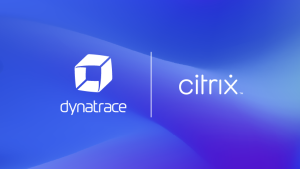| For the latest details regarding Cloud Foundry monitoring with Dynatrace, please see Dynatrace Help. |
We’re happy to announce that Dynatrace now provides monitoring support for Cloud Foundry PaaS.
Cloud Foundry is a Platform-as-a-Service that consists of a set of open-source tools that help you run web applications at scale. Once the platform is set up and running, your developers can push applications to it. Health management, failover, and load-balancing of application instances are provided.
Applications deployed on Cloud Foundry are run through build packs, which provide framework and runtime support for applications running on the Cloud Foundry platform.
Set up Cloud Foundry monitoring
The first step is to get your Dynatrace environment ID and token. This information is presented to you during OneAgent deployment.
To deploy OneAgent
- Open the navigation menu and select Deploy Dynatrace.
- On the Deploy Dynatrace page, click Start installation.
- You’ll find the environment ID and token at the bottom of the Download OneAgent page.
- Create a Dynatrace service in your Cloud Foundry environment
Cloud Foundry allows you to connect applications with 3rd party tools and other external resources (for example, databases) by means of services. This is why you need to define a service instance by either creating a so-called “user-provided service” or by using a service broker application.-
- Option 1: Create a user-provided service
With a user-provided service you must specify your Dynatrace credentials on your own.
To begin, create a single service instance for Dynatrace whose name, or tag, has
ruxitas a substring. For example:$ cf cups dynatrace -p '{"tenant":"{environmentID}", "tenanttoken":"{token}"}'-
- Option 2: Create a service instance via service broker
If you want to maintain Dynatrace credentials at a central location, use a service broker. For complete details, visit GitHub. You must configure and run the broker as an application, add the service broker to Cloud Foundry, enable service access to users, and finally, create the service instance.
-
- Bind the service to your application.
You can either bind the created Dynatrace service to your application in yourmanifest.ymlprior to starting your app or you can bind and restage the app afterwards.
---
applications:
- name: spring-music
memory: 768M
instances: 1
host: spring-music-${random-word}
path: spring-music.war
buildpack: https://github.com/cloudfoundry/java-buildpack.git
services:
- ruxit - Now when you push your app to Cloud Foundry the buildpack automatically adds OneAgent to the application and uses the credentials from the service binding.
What’s included
OneAgent for Cloud Foundry currently offers the full range of application and service visibility that you’ve come to expect from Dynatrace. In particular, service flow provides insight into your applications running on Cloud Foundry.
Dynatrace provides full Real user monitoring and deep service monitoring capabilities including method-level insights, service flow, service backtrace, and database monitoring.
As of today, OneAgent for Cloud Foundry supports Java applications. Node.js support is just around the corner.
Cloud Foundry beta support
As Cloud Foundry is a PaaS environment, not all functionality on the process and host levels are currently available. Over the coming weeks we will add deeper process-metric insights and support for Node.js and PHP.



Looking for answers?
Start a new discussion or ask for help in our Q&A forum.
Go to forum